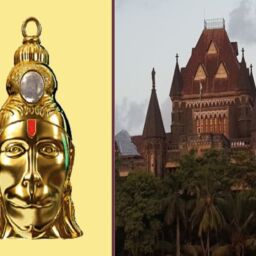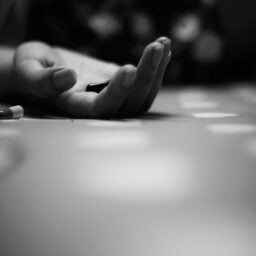INTRODUCTION
“Marte hain aarzoo mein marne ki Maut aati hai par nahin aati”
Former Supreme court judge of India and eminent jurist Markandey Katju while delivering the landmark judgment related to euthanasia in Aruna Ramachandra Shanbaug v. Union of India[1] beautifully expressed the above words of distinguished poet Mirza Ghalib.
The term ‘Euthanasia’ (Eu+Thanatos) is a Greek word that translates to ‘Good death’. It refers to the act of allowing one to die or putting one to death painlessly or as an act of mercy, giving it the more commonly known name of ‘Mercy killing’.
The American Medical Association (AMA) terms euthanasia as “the administration of a lethal agent by another person to a patient for the purpose of relieving the patient’s intolerable and incurable suffering.”[2]
Euthanasia can widely be categorised into two, namely:
Active euthanasia:
It refers to the direct act of causing the death of a person as a response to the request made by the person. It is a type of euthanasia where a person undergoing immense suffering has no practical scope of recovery from the same and is induced to death directly via the administration of lethal medication.
A well-known incident of Active euthanasia was the 1998 case where Thomas Youk, a 52-year-old man from the State of Michigan suffering from Amyotrophic Lateral Sclerosis (ALS), was administered lethal medication by Dr. Jack Kevorkian upon his request. Although the same had been done as per the request of the patient and with consensus to the fact that Mr. Youk was suffering from a rare neurological disease, the concerned authorities held Dr. Kevorkian guilty of first-degree premeditated murder, suicide assistance, and also for the delivery of a controlled substance to administer lethal medication. Later in 1999, a jury found Dr. Kevorkian guilty of second-degree murder, and he was later sent to prison.[3]
Passive euthanasia:
Passive euthanasia is generally understood to be the withholding of medical treatment or altering some form of life support upon the patient’s request with an intent that death is to occur sooner or later via the natural course. Here unlike Active euthanasia, no lethal medication is administered, and via withdrawal of treatment, death is merely hastened by letting nature take its course.
However, there is a thin line of difference between Active and Passive euthanasia, as there are few cases in Passive Euthanasia where large doses of pain suppressants such as Morphine are administered to the patient to help suppress his pain, with prior knowledge that such high magnitude of doses has a dual effect of both- reducing pain and hastening death, as when large amounts of Morphine are administered there is a high likelihood that the same can lead to respiratory suppression.
Another argument is that Passive euthanasia is merely an omission and cannot technically be considered euthanasia. However, this argument is deemed flawed based on morality and professionalism, as another set of people counter the same by stating the above-said omission as a breach of the medical practitioners’ duties.[4]
While trying to push her private bill to ban acts of Passive euthanasia in 2000, the UK’s former MP Anne Winterton also somewhat believed in the latter. She stated, “It shall be unlawful for any person responsible for the care of a patient to withdraw or withhold from the patient medical treatment … if his purpose or one of his purposes in doing so is to hasten or otherwise cause the death of the patient”[5].
EUTHANASIA: A RELIGIOUS PERSPECTIVE
Article 21 of the Indian Constitution speaks about the ‘Right to protection of life and personal liberty. Whether the ‘Right to die’ was also inclusive in Article 21 remained in the grey for many years.
The concept of ‘euthanasia’ had a mixed response in the nation due to strong religious notions. For example, in Hinduism, the ideal death is termed equivalent to a conscious death. However, there are two contradictory views by Hindus on Euthanasia, namely:
- By helping to end a painful life, a person is performing a good deed and so fulfilling their moral obligations
- By helping to end a life, even one filled with suffering, a person is disturbing the timing of the cycle of death and rebirth. This is a bad thing to do, and those involved in euthanasia will take on the remaining karma of the patient.
In Islam, the belief is that all life is sacred as is given by Allah and that it is Allah who determines till when one lives, and human interference in the same must be avoided. Qur’an 17:33 says, “Do not take life, which Allah made sacred, other than in the course of justice.” The practice of suicide and euthanasia are both forbidden in Islam, and the same can be implied via the following verses:
- Qur’an 4:29 states, “Destroy not yourselves. Surely Allah is ever merciful to you.”
- The prophet’s statement in the Shahi Bukhari 4.56.669 is that “Amongst the nations before you, there was a man who got a wound, and growing impatient (with its pain), he took a knife and cut his hand with it, and the blood did not stop till he died. Allah said, ‘My Slave hurried to bring death upon himself, so I have forbidden him (to enter) Paradise.”
In Christianity, similar to that of Islam, the notion is that all life is a gift from God and that both birth and death are processes that are God created, and Humans have no authority to take another’s life even if that person wants to die. The church regards any law permitting euthanasia as an intrinsically unjust law.
- Pope John Paul II stated that “Euthanasia is a grave violation of the law of God since it is the deliberate and morally unacceptable killing of a human person..”
- The Roman Catholic church also terms euthanasia as a morally wrong act.[6]
EUTHANASIA IN INDIA
We can observe how the concept of euthanasia gradually planted its roots in Indian society by looking into some judicial decisions on the same. Some landmark cases are,
- Aruna Shanbaug case[7]:
Aruna Shanbaug, a nurse whom a co-worker strangled with a chain in 1972, remained in a vegetative state for almost 40 years with no signs of improvement. Her friend, an activist, filed a petition in the Supreme court stating this as a violation of Aruna’s ‘Right to live with dignity.’ as Aruna showed no signs of recovery at all and to euthanise her to let her pass gently.
Although the SC rejected her plea, the bench of Justice Markandey Katju and Justice Gyan Sudha Mishra laid down this landmark judgment recognising passive euthanasia in India in 2011. However, specific guidelines were laid down for the same. They were:
- The discontinuation of the patient’s life support can only be decided by the patient’s family or spouse, or any other family member. It can also be conducted with the presence of the Doctor who was attending to that patient.
- The reason to euthanise the patient must be in the patient’s interests and must be certified.
- The Medical Board of the hospital must approve the particular decision, and it required two witnesses before its conduction, and the first-class judicial magistrate must countersign the same.[8]
- Common Cause case (2018) [9]:
In 2005, a registered society for the common welfare of people called ‘Common Cause’ filed a writ petition in the SC through Article 32 of the Indian Constitution to legalise passive euthanasia and living will. The main contention of the petitioner here was to include the ‘right to a dignified death’ also in the ambit of Article 21.
A living will is a legal document through which a person states his/her desire to die in advance, i.e., it is a statement made in advance where a person authorises his family to withhold medical treatment when the will-maker is in a vegetative state[10].
So the SC, through this case in 2018, legalized both passive euthanasia and living will and laid down specific guidelines related to the execution of a living will. The court also openly stated the need for a proper law pertaining to and governing passive euthanasia and related areas and said that the guidelines laid down by them remained in force until specific legislation is made.[11]
In India, due to cultural and religious diversity, one can witness mixed views towards certain laws. For example, Euthanasia as an act wouldn’t be legalised if it was looked at from a religious point of view. But via the above judgments, we can observe that the judiciary highlights the true spirit of justice by adapting to laws as and when the time changes.
Author(s) Name: Vishal Raghavan NS (Student, KLE Society’s Law College, Bangalore)
References:
[1] Aruna Ramachandra Shanbaug v. Union of India, (2011) 4 SCC 454.
[2] https://www.ama-assn.org/delivering-care/ethics/euthanasia
[3] Kevorkian charged with murder in euthanasia case, 1998 ( http://edition.cnn.com/US/9811/25/kevorkian.02/ )
[4] Garrard E, Wilkinson S, Passive euthanasia, Journal of Medical Ethics;31:64-68 (2005)
[5] Medical Treatment (Prevention of Euthanasia) Bill 2000, UK Parliament.
[6] http://www.bbc.co.uk/ethics/euthanasia/religion/religion.shtml
[7] Aruna Ramachandra Shanbaug v. Union of India, (2011) 4 SCC 454.
[8] Shraddha Ajit Mulgund, Euthanasia, Lexlife India, March 20th 2021( https://lexlife.in/2021/03/30/euthanasia/ )
[9] Common cause v. UOI, (2018) 5 SCC.
[10] Ibid (8).
[11] Ishita Arora, Common Cause vs Union of India, E-Justice India,2020 (https://www.ejusticeindia.com/common-cause-vs-union-of-india/ )
















